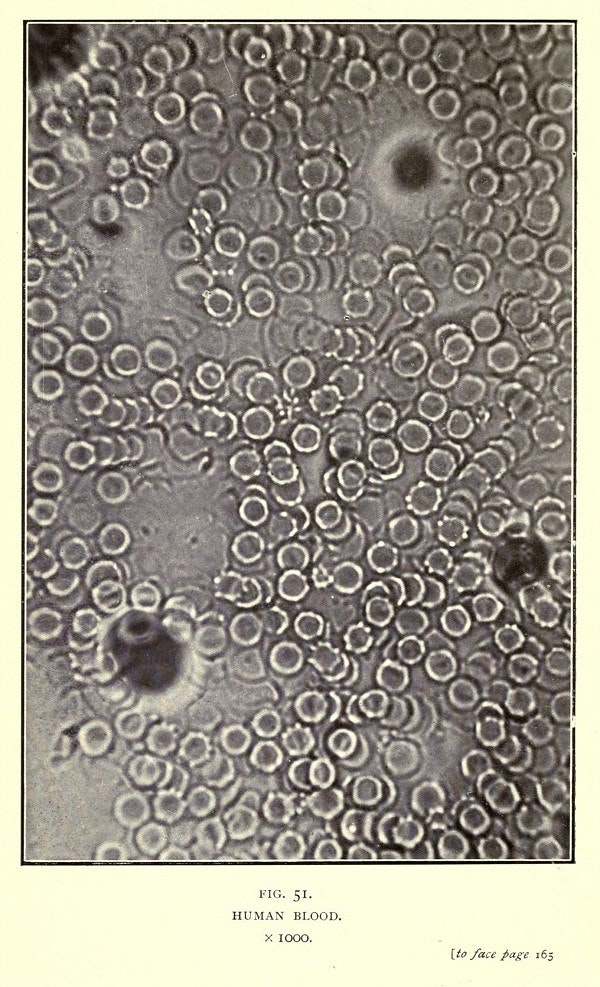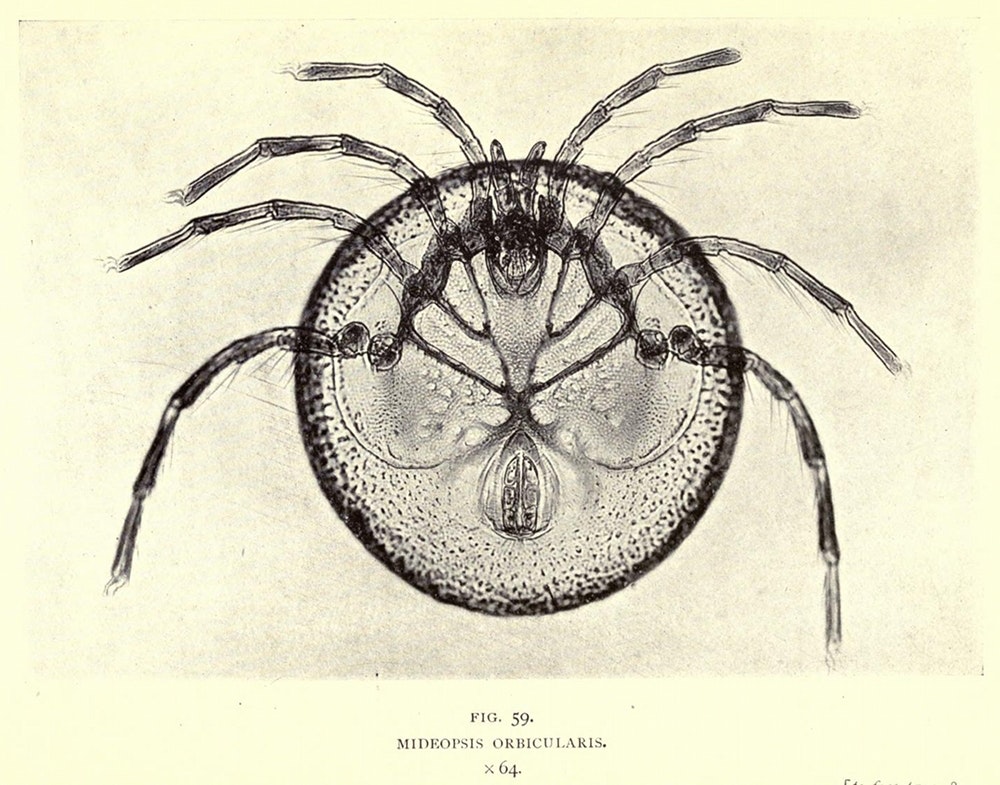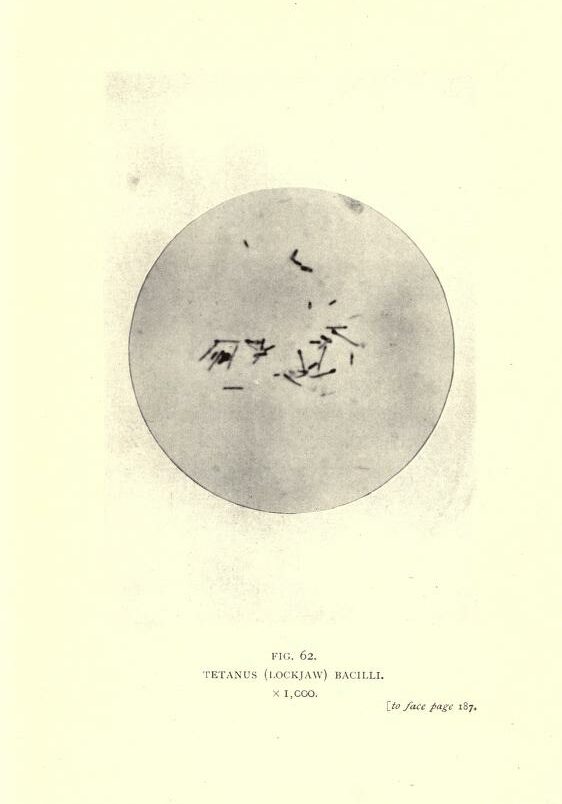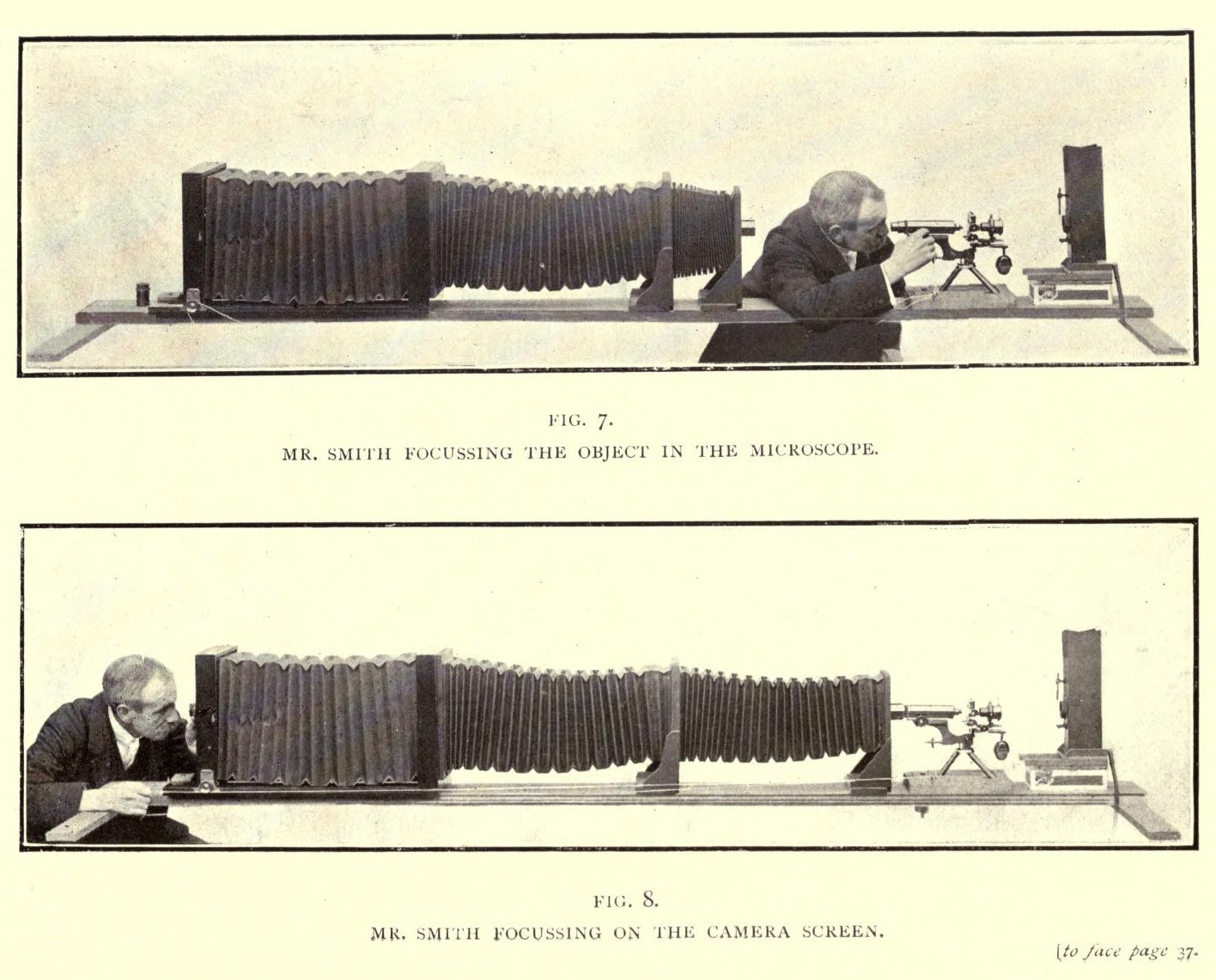Land Photomicrography, the art of capturing detailed images of microscopic subjects, has undergone significant advancements over the years. In the early 1900s, when modern microscopes with flat field objectives, quartz halogen illumination, and electronic exposure determination were not yet available, photomicrographers faced numerous challenges. However, they still managed to achieve remarkable results with the equipment and materials at their disposal.
One notable figure from that era is Arthur E. Smith, a photomicrographer mentioned in the book “Nature Through Microscope and Camera” by Richard Kerr, published in 1905. This book, which often appears in second-hand bookshops and is highly sought after, showcases Smith’s photomicrographs and provides insights into the techniques and achievements of early photomicrography.


 Despite the era’s limitations, Smith’s photomicrographs displayed remarkable technical and artistic quality. The book features a wide range of magnifications, including highly detailed images of diatoms at 1750X and macro shots of insects at 8X. Smith demonstrated how to maximize the capabilities of modest optics and achieve impressive results.
Despite the era’s limitations, Smith’s photomicrographs displayed remarkable technical and artistic quality. The book features a wide range of magnifications, including highly detailed images of diatoms at 1750X and macro shots of insects at 8X. Smith demonstrated how to maximize the capabilities of modest optics and achieve impressive results.
Photographing through a microscope in the early 1900s required specialized equipment. A photograph in the book depicts a microscope with an impressive bellows extension, necessary to project the microscopic image onto large 12 x 10-inch photographic plates. Smith emphasized the use of achromatic objectives for all the book plates and avoided retouching the negatives.
In terms of techniques, Smith opted for conventional gas lighting as the illumination source rather than the more intense options available at that time. Exposures ranged from a few seconds to several hours, and colored filters were employed to control contrast in certain subjects.
Looking back on the early achievements in photomicrography, it is fascinating to consider the progress made in the field. Today, silver-based image recording has been largely replaced by digital techniques, and the equipment and methods used for capturing microscopical images have significantly evolved.
Combining the technical skills and artistic vision of early photomicrographers like Arthur E. Smith with the advancements of modern technology, we continue to explore and appreciate the intricate beauty of the microscopic world.
